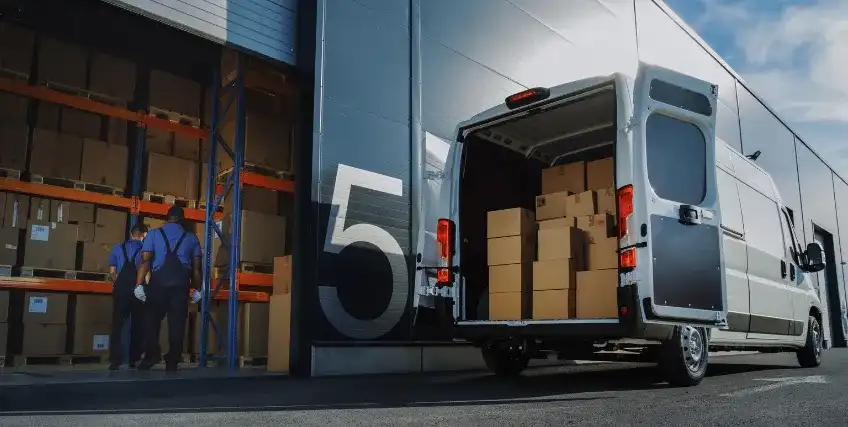Beyond City Limits Financing Paths for Small-Town Entrepreneurs
August 20, 2025 | Last Updated on: August 20, 2025

Rural small business owners are the backbone of Main Street – yet they often face a wall when seeking loans for small businesses. Folks outside big cities don't get the same level of access to capital, and that hurts everything from new storefronts to family farms. It's not just about geography – lenders worry about lower population, weaker cash flow, or lack of nearby financial institutions. There's a spotty spread of community banks or credit unions in rural areas; that means entrepreneurs have fewer financing options, slower decisions and higher perceived risk. Getting working capital, covering a down payment, or investing in commercial real estate can feel like a long shot.
That's why it's vital to dig into the tools that do reach these towns – loans for small businesses through USDA, local lenders, online platforms, even SBA loan programs. Rural entrepreneurship deserves support. And it's not just about business – it's about keeping communities thriving, giving families jobs, and creating an economic ripple that matters.
The Unique Financing Challenges Outside Urban Hubs
Running a business in a small town is a different ball game. You're not just managing cash flow or finding new customers – you're also navigating a lending environment that's, well, thinner. The truth? Rural entrepreneurs have fewer nearby financial institutions willing to provide loans for small businesses. Many national banks consolidate branches into cities, leaving small towns with one or two business banking options, if that.
Even when you find a lender, approval times can drag as some loan applications may get routed to distant underwriting teams who aren't familiar with local markets. They may not see the potential in a hardware store on Main Street or a family-run diner off the highway. And without an in-person connection, you lose the chance to build trust – the kind that used to get a handshake deal moving.
And then there's the cost. Interest rates for some rural borrowers can be higher because lenders factor in perceived market risk. So, securing loans for small businesses in rural America isn't just about meeting eligibility requirements – it's about overcoming structural gaps that shouldn't exist in the first place.
USDA Business & Industry (B&I) Loan Program: A Rural Lifeline
For rural entrepreneurs, the USDA Business & Industry (B&I) Loan Program is more than paperwork. It's often the bridge between an idea and a fully funded plan. Backed by the U.S. Department of Agriculture, this loan program supports loans for small businesses in communities with populations under 50,000. The goal? Strengthen local economies, create jobs, and keep businesses rooted where they started.
How does it work? Lenders issue the loan, and USDA guarantees up to 80% of the loan amount, reducing the lender's risk. That guarantee opens the door for borrowers who might otherwise be passed over due to location or lack of large collateral. Funds can be used for a wide range of business needs, like buying commercial real estate, refinancing debt, purchasing equipment, or boosting working capital for day-to-day operations.
Terms are flexible, too. Depending on the purpose, small business loan terms can stretch up to 30 years for real estate, 15 for equipment, and 7 for working capital. Interest rates are negotiated between borrower and lender but must be “reasonable” under USDA rules.
Processing can take several weeks, especially if additional environmental or feasibility reviews are required. But for many small business owners in rural America, the trade-off is worth it – a longer wait for funding that might not be available anywhere else. In towns where one new business can shift the local economy, that's no small thing.
The Role of Community Banks & Credit Unions
In rural America, loans for small businesses often start with a familiar face at the local bank. Community banks and credit unions thrive on relationships, not just numbers on a credit report. When a loan officer has seen your business grow from an empty storefront to a busy Main Street fixture, the conversation shifts and suddenly you're not just a borrower, you're a neighbor.
These smaller financial institutions can be more flexible than national banks. They may adjust small business loan terms to fit seasonal cash flow patterns, especially for farming, tourism, or construction businesses. Local lenders can tailor repayment to real-world cycles, something large banks rarely match.
Data backs it up: community banks hold about one-third of all small business loans in the U.S., despite controlling less than 12% of total banking assets. That's a sign of their outsized role in small business financing.
Of course, there's a trade-off. These lenders may have slightly higher interest rates or require more in-person meetings. But for small business owners who value trust and tailored solutions, that extra effort can mean getting funded when big banks say no. And in small towns, the lender's decision doesn't just impact one business; it ripples across the entire community.
Online Financing: Bridging the Distance Gap
Sometimes, the closest bank branch is an hour away. That's where online lenders step in, making loans for small businesses available with just a laptop or phone. For rural entrepreneurs, digital platforms can erase the “distance penalty” that's so common in traditional lending.
The process is much faster.. That speed matters when a farm needs to replace a broken tractor during planting season, or when a local store needs working capital before tourist season kicks off. Platforms like these also offer flexibility – term loans, lines of credit, even refinancing options – without requiring you to sit across from a lender in person.
But it's not just convenience. Online lenders often use alternative data, like business revenue trends or annual revenues, instead of relying solely on credit score. That can make a difference for small business owners with solid cash flow but limited collateral.
Of course, caution's part of the deal. Some online loans come with higher interest rates or shorter repayment periods, so comparing small business loan terms is essential. In towns where waiting weeks for funding could mean lost opportunity, online financing isn't just a modern perk; it's sometimes the only realistic lifeline.
Matching Loan Types to Rural Business Needs
Not all loans for small businesses are created equal. What works for a retail shop in a tourist town might be a terrible fit for a cattle farm. The trick is knowing which financing tool matches your business needs and how to use it without overextending your cash flow.
1. Retail
For rural retail stores, seasonal demand swings can make or break annual revenue. Small business term loans are a solid choice for renovations, new displays, or stocking up before peak shopping periods. Some owners also use lines of credit to manage working capital when sales dip. Approval from financial institutions may hinge on a solid business plan and proven credit score.
2. Farming & Agribusiness
Agriculture has unique cycles and risks. Loans for small business owners in farming often fund equipment purchases, livestock, or irrigation systems. USDA loan programs and SBA-guaranteed financing are common choices, especially for those meeting eligibility requirements. Flexible repayment terms help match harvest cycles.
3. Local Services
From salons to auto repair shops, local service businesses depend heavily on steady cash flow. Term loans can cover renovations, while microloans or lines of credit help with supplies and day-to-day operations. It is noted that service-based ventures make up over half of rural small business financing requests. For these owners, matching small business loan terms to real-world payment cycles can mean the difference between staying open year-round or shutting down in the slow months.
Navigating Approval Timelines & Documentation in Rural Lending
How long does it take to get loans for small businesses approved in rural areas? Longer than most owners would like. Part of the delay comes from fewer local financial institutions, like applications often get sent to regional or national offices for review. Without the ability to walk in, meet a loan officer, and explain your business plan in person, that personal connection is lost.
Typical documentation requirements aren't light either. Expect to provide annual revenues, tax returns, proof of business credit, details on collateral (if any), and sometimes even a market feasibility study. For SBA loan programs, add eligibility requirements like proof of for-profit status, U.S. operation, and acceptable credit score.
Rural small business owners also run into timing issues if an application needs extra review, like for an environmental impact check on a commercial real estate project. That can stretch approval timelines from weeks to months.
The solution? A “lender-ready” package – complete, clear, and backed by realistic small business loan terms – can shave days off review time. In a small-town economy, that difference can decide whether a new café opens this summer or waits until next year.
Overcoming Location-Based Lending Bias
It's a tough reality – loans for small businesses in rural areas can be harder to secure, not because the numbers don't add up, but because of where the business is located.
Overcoming this bias starts with showing hard proof. Strong cash flow records, clear repayment histories, and detailed business plans can challenge outdated assumptions. Adding market data, like regional spending patterns or tourism figures, helps too.
Grants and Alternative Funding Sources in Rural America
Not every rural entrepreneur wants to take on debt. And honestly, sometimes loans for small businesses just aren't the right fit, especially for startups still finding their footing. That's where grants and alternative funding come into play.
Federal programs like the USDA's Rural Business Development Grants and the SBA's grant resources can provide funding without repayment obligations. These are competitive, sure, but they can cover everything from equipment purchases to technical assistance. State-level options and regional economic development agencies also offer grants tailored to rural small business owners.
Crowdfunding platforms are another route, letting local communities and even strangers across the country invest directly in your idea. Then there's the role of nonprofit organizations, which often offer microloans or small cash infusions alongside mentorship and business resources.
Grants may take time and patience to secure. But for some businesses, that's time well spent, especially when it means avoiding high interest rates and tough small business loan terms down the road.
Conclusion
Rural America isn't short on ambition; it's short on access. The right loans for small businesses can change that, turning small-town ideas into thriving ventures that create jobs and strengthen communities. Whether it's a USDA-backed loan, a handshake deal at the local credit union, or fast funding through an online platform, the path is there.
Challenges do exist, like longer approval times, limited financing options, and the occasional location bias. But with preparation, persistence, and a strong business plan, rural small business owners can compete for funding on equal ground with their urban peers.
In the end, it's not just about securing money. It's about building something that lasts. The right small business loan terms can do more than cover bills; they can fuel growth, stability, and pride in a community that's been there all along.
FAQs on Loans for Small Businesses in Rural America
1. What are some of the best loans for small businesses in rural areas?
Some of the best loans for small businesses may include USDA Business & Industry loans, SBA-guaranteed programs, and flexible term loans from community banks. Each has different eligibility requirements, interest rates, and repayment options. Your choice should match your business needs, whether that's buying commercial real estate, boosting working capital, or covering day-to-day operations.
2. Can rural small business owners get SBA loans easily?
If you are thinking of securing loans for small businesses, then keep in mind that accessing an SBA loan isn't always quick, but rural small business owners can qualify if they meet the eligibility requirements. Programs like the SBA 7(a) loan or microloans are popular for startups and existing businesses. The process may require more documentation, but with a solid business plan and good credit score, approval odds improve significantly.
3. How do I speed up a rural loan application?
Submit a complete package, like tax returns, annual revenues, business credit details, and collateral information. If applying for small business term loans, confirm that all lender-specific forms are correct. For loans for small business owners, working with a lender familiar with rural markets can cut weeks off approval.
4. Are online financing options safe for rural businesses?
If you stick to reputable platforms with clear small business loan terms. Check interest rates, fees, and lender reviews. Online financing options can be faster than in-person banks and help businesses with limited lines of credit access needed working capital quickly. Always compare offers before signing.
5. Can grants replace small business loans?
Grants - whether federal, state, or from nonprofit organizations - don't require repayment and can fund technical assistance, equipment, or expansion. However, they're competitive and may not cover all business needs. Many owners combine grants with loans for small businesses to fully finance their plans
Frequent searches leading to this page
Term Loans are made by Itria Ventures LLC or Cross River Bank, Member FDIC. This is not a deposit product. California residents: Itria Ventures LLC is licensed by the Department of Financial Protection and Innovation. Loans are made or arranged pursuant to California Financing Law License # 60DBO-35839




